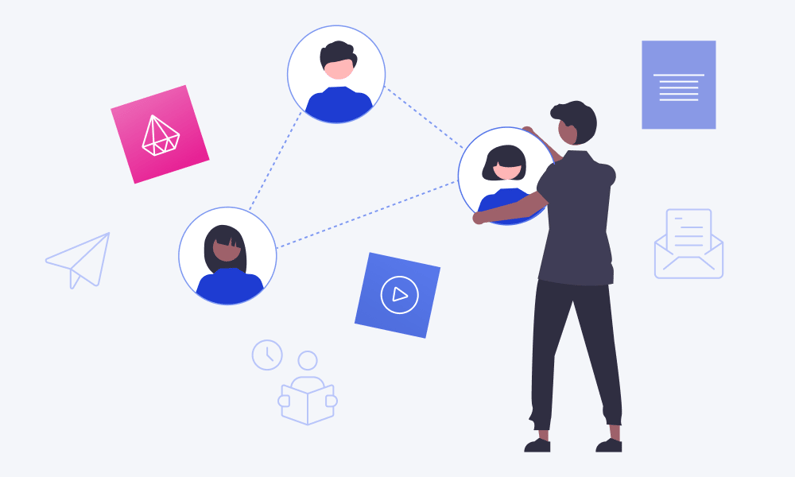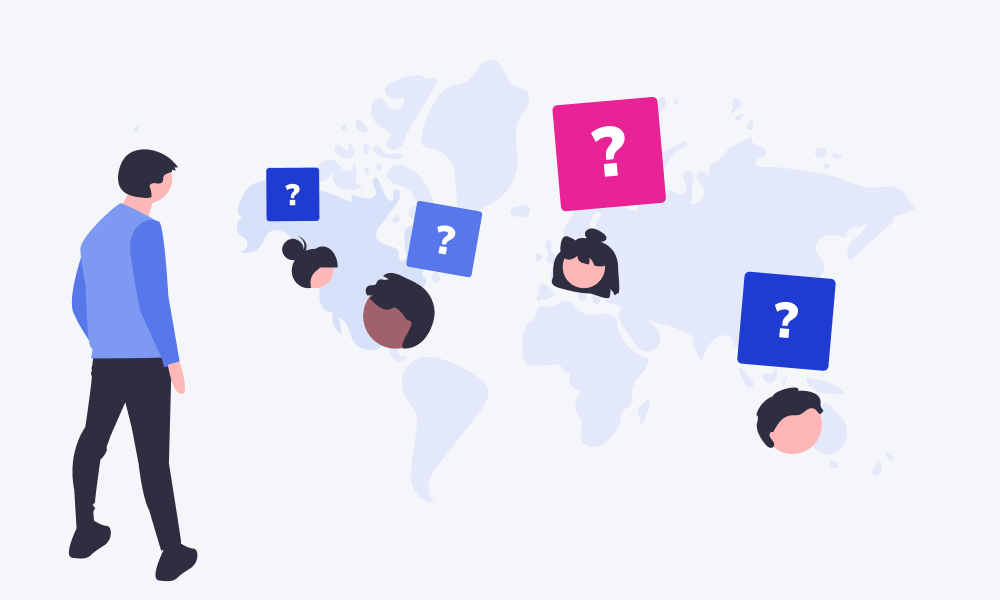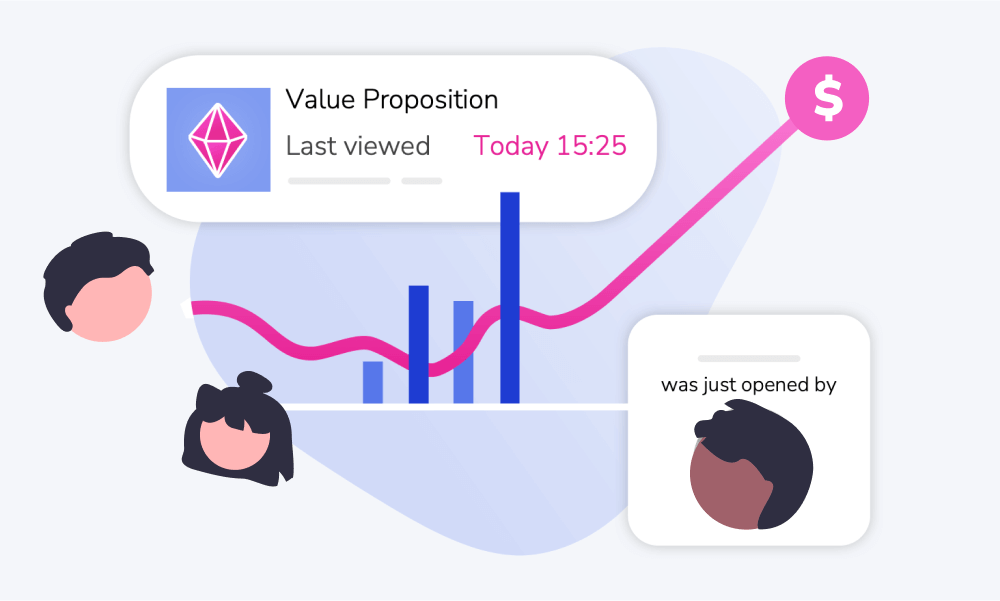Sales performance isn't just a metric; it's a nuanced blend of strategy, psychology, and the art of human interaction. In the intricate dance of B2B sales, every interaction, every pitch, and every negotiation carries with it a tale of psychology and decision-making.
Beyond the evident need for product fit and pricing strategies, understanding the profound interplay between buyer behavior and cognitive biases isn't just an academic endeavor—it's a decisive factor in a salesperson's success. Each opportunity converted or missed has a story, often deeply rooted in these human elements. But what happens when a salesperson steps into this arena armed with not just product knowledge, but also an understanding of the buyer's cognitive landscape?
This blog isn't about manipulating decisions but rather comprehending the undercurrents that influence them. In this exploration, we'll delve deep into the connection between buyer behavior, cognitive biases, and their direct impact on sales performance and outcomes.
By understanding the psychological underpinnings, sales professionals can elevate their interactions, fostering genuine relationships while simultaneously boosting their sales performance.
Table of Content
-
The Brain and Buying Decisions: Direct Consequences for Sales →
-
Cognitive Biases in Sales: Their Pervasive Impact on Sales Performance and Outcomes →
-
Active Listening and Empathy: Tools to Navigate and Counteract Biases to Improve Sales Performance →
The Brain and Buying Decisions: Direct Consequences for Sales
The fascinating dance of decision-making is more than just weighing pros and cons—it’s rooted deep within the intricate neural networks of our brains. These decisions, especially in the B2B landscape, are seldom made on a whim.
They're the outcomes of complex interactions between logic, emotion, past experiences, and expectations. Harvard Business School professor Gerald Zaltman suggests that a staggering 95% of purchasing decisions are subconscious, driven by emotional factors.
In this exploration of the brain and buying decisions, let’s unearth the tangible links between neural pathways, past experiences, emotions, logic, and their collective impact on sales performance and outcomes.

The Buyer's Brain: A Neural Adventure
Every time a buyer deliberates on a purchase, various brain regions come into play. The prefrontal cortex, responsible for logical reasoning and planning, analyzes the tangible benefits of the offering. In contrast, the amygdala, our emotional command center, gauges how the purchase makes one feel. You’ll find that successful sales pitches often strike a balance between appealing to both these brain areas.
Here's a blog you might find interesting: 5 Proven Storytelling Techniques in Sales to Improve Your Pitch →
Emotion vs. Logic: The Delicate Scale of Decision
Historically, B2B sales were seen as purely logical transactions. However, emerging research suggests that emotion plays a substantial role, even in these high-stakes decisions.
A study by the Corporate Executive Board and Google discovered that B2B buyers are significantly more emotionally connected to their vendors and service providers than previously believed. This emotional connection can often be the tipping point in a sale, highlighting the importance of tapping into both rationality and sentiment.
Influence of Memories and Past Experiences
Past experiences play a pivotal role in shaping current and future purchasing decisions. The hippocampus, a crucial brain region for memory, links previous experiences with emotions, thereby influencing preferences and choices.
As a sales professional, understanding a client's past experiences can provide valuable insights so you can better tailor your approach. A study from the Journal of Consumer Psychology indicates that leveraging positive memories can significantly enhance a product's appeal.
Similarly, we are innately drawn to narratives and stories. We humans, being creative and imaginative beings, need imagination to solve problems. Stories provide an effective way of providing a framework for our imaginations to run wild. By providing narrative structure, stories can help us to better understand complex issues and come up with creative solutions.
Learn more about it from our blog Unleashing the Power of Storytelling in Sales Presentations →
Tapping into the intricacies of the brain's decision-making processes offers you a competitive edge. By aligning strategies with how prospects think and feel, you can better position yourself for successful interactions and enhanced sales performance.
Cognitive Biases in Sales: Their Pervasive Impact on Sales Performance and Outcomes
Ever wondered why that extra-large popcorn at the movies suddenly seems like a steal after you see the medium's price? Or why you're more likely to grab that limited-time offer than a regular deal? The secret lies in our brain's shortcuts: cognitive biases.
Cognitive biases are systematic patterns of deviation from norm or rationality in judgment. They significantly impact our decisions, often without us even realizing.
In sales, these biases can act as unseen forces, either propelling or hindering deals in unexpected ways. Let’s look into some of these biases:
Navigating the Landscape of Biases
At its core, a cognitive bias is a systematic pattern of deviation from norm or rationality in judgment. Dr. Daniel Kahneman, a Nobel laureate, detailed this concept extensively in his groundbreaking book, "Thinking, Fast and Slow". He proposes that these biases often result from our brain's attempt to simplify information processing.
While this might sound abstract, the real-world implications, especially in sales, are palpable.
1. Anchoring Effect: The Power of First Impressions
One commonly observed bias in sales is the anchoring effect. The anchoring effect refers to the human tendency to rely heavily on the first piece of information (the "anchor") encountered when making decisions.
Remember the first time you saw a product and thought, "That's expensive!" only to find the next option (just a tad cheaper) way more reasonable? That, my friend, is the anchoring effect.
A tactic you can use: setting a higher initial price can make subsequent prices seem more attractive. This study from the Journal of Marketing Research emphasizes how initial price points can anchor consumer value perception.
2. Confirmation Bias: Why "I Knew It!" Moments Feel So Good
We all love to be right. And our brain? It cherry-picks information that says, "Hey, you're on point!"
Similarly, the confirmation bias—the tendency to search for, interpret, and remember information that confirms one's beliefs and preconceptions—can lead buyers to inadvertently seek out information that only supports their initial viewpoint. It revolves around our preference for information that aligns with our existing beliefs.
In sales, it underscores the importance of understanding a client's preconceptions and aligning your pitch to resonate with those beliefs.

3. Decoy Effect Or The Art of The "No-Brainer" Choice
Ever faced choices where one just pops out as the obvious winner? That’s the decoy effect in action. It involves presenting an option that is clearly inferior (the decoy) to make another option more appealing.
For instance, having three pricing tiers where the middle option is only slightly more expensive than the basic but offers significantly more can make the middle option more appealing.
4. Loss Aversion: FOMO
People tend to prefer avoiding losses more than acquiring equivalent gains. The fear of missing out (FOMO) isn't just about parties—it's deep-rooted in our decisions. We're wired to avoid losses like we avoid spoilers for our favorite shows.
This concept is foundational in risk management and sales tactics like limited-time offers. This paper by Kahneman and Tversky in Econometrica provides a comprehensive overview of the principles of loss aversion.
The Salesperson's Blind Spot: Unchecked Biases
As a sales person, you aren't immune to these biases either. There's the optimism bias, where you might overestimate the likelihood of a sale's success, neglecting potential red flags. Then there's the sunk cost fallacy, which can keep you from investing time and resources in a deal that, rationally speaking, isn't worth pursuing.
In mastering the art and science of sales, awareness of cognitive biases equips you with a deeper understanding of their clients' thought processes. By diving into these cognitive insights, you're not just selling; you're connecting, understanding, and elevating your sales mojo.
Leveraging Awareness for Sales Success
But it's not all a minefield. By being aware of these biases, you can preemptively address potential issues, refine your pitches, and navigate negotiations more effectively. Harnessing this knowledge gives you an edge, turning potential pitfalls into tools for deeper understanding and connection.
Buyer Personalities and Their Inherent Biases
When sales professionals share insights about their prospects, they're bound to discuss the varied personalities they encounter. Each buyer carries their unique traits, preferences, and yes, biases.
By understanding the interplay between buyer personalities and the cognitive biases they inherently lean towards, you can unlock deeper insights, tailor your strategies, and foster genuine connections.
The Four Primary Buyer Types and Their Biases
While personalities are diverse, many experts categorize buyers into four primary types:
- The Analytical Buyer: Detail-oriented, they want data and thorough analysis before making decisions. For them, provide comprehensive specs, case studies, and ROI projections.
- The Amiable Buyer: Relationship-focused, they prioritize trust and a genuine connection. Engage them with stories, testimonials, and personalized interactions.
The Amiables might lean into affinity bias, favoring salespeople or products they feel a personal connection with. - The Driver Buyer: Decisive and goal-oriented, they seek efficiency. Be direct, offer clear solutions, and get to the point.
This buyer could exhibit overconfidence bias, believing they know more than they actually do, and making swift decisions based on that. - The Expressive Buyer: Enthusiastic visionaries, they're drawn to big ideas. Pitch them with vivid visuals, innovation, and a broader vision.
Often, Expressives make decisions based on their emotions and are concerned about others' well being. Although they tend to be people-pleasers, these people are often powerful personalities who use their personalities to convince others of their strongly held beliefs.
Adapting Your Sales Strategy
Understanding the above intersections enables you to customize their approach. For the analytical buyer, you might present information in digestible chunks, preventing overwhelm. For the assertive buyer, one might offer concise, confident pitches, reinforcing their need for swift decision-making. With relational buyers, building rapport becomes paramount.

Once you've identified a buyer's personality type, it's time to tailor your approach. This doesn't mean reinventing your pitch for every lead but subtly adjusting your communication style, presentation materials, and even follow-up methods. Remember, the ultimate goal is alignment—not manipulation.
Sales isn't just about pushing a product; it's about understanding people—their wants, needs, and the cognitive biases that influence their choices.
With this understanding, you can not only better serve your clients but also elevate your own sales performance to new heights.
Active Listening and Empathy: Tools To Navigate and Counteract Biases To Improve Sales Performance
In the realm of sales, the spotlight often shines on the art of persuasion. But in reality, the secret sauce to exceptional sales performance may be far less about speaking and far more about listening—truly listening. Enter active listening and empathy, two powerhouse tools that, when wielded with skill, can cut through biases, build trust, and catalyze genuine connections.
In the cacophony of pitches, presentations, and negotiations, the power of genuinely listening can set you apart.
Active Listening: More Than Just Hearing
Active listening isn't merely about letting your client talk; it's about genuinely understanding and processing their words, needs, and underlying concerns. It means giving feedback, asking pertinent questions, and refraining from crafting your response while they're still speaking.
It's a multi-faceted process:
- Reflecting: This entails mirroring back what the buyer said, ensuring they feel understood.
- Clarifying: Asking open-ended questions to dive deeper into the buyer's needs and concerns.
- Summarizing: Periodically wrapping up main points ensures both parties are on the same page.
According to Sales Readiness Group, top salespeople were selling around 120% above their quotas by simply being more attentive and getting their prospects to talk more. One of the most effective ways to leverage active listening is by asking the right sales questions at the right time to guide the conversation toward a successful close.
Seeing Through the Buyer's Eyes
Empathy takes you beyond transactional interactions, allowing you to feel what the client feels. By genuinely understanding their pain points, challenges, and aspirations, you can tailor your solutions to resonate deeply. Empathy fosters genuine connections, making your clients feel valued, not just another lead.
Empathetic salespeople can intuit the unsaid needs and fears of a buyer, which can guide the sales pitch in a more personalized and effective direction.
Harnessing Buyer Behavior and Cognitive Biases for Superior Sales Performance
Sales, especially in the B2B realm, is both an art and a science. It demands a blend of analytical understanding, adaptability, and genuine human connection.
Sales professionals who lean into this knowledge, who invest in understanding not just the 'what' of their buyers' decisions but the 'why', position themselves leagues ahead of the competition. Why? Because they're no longer merely selling—they're connecting, resonating, and aligning with their buyers at a fundamental level.

As sales moves further from transactional interactions and towards relationship-building, those who master the nuances of human behavior and cognitive biases will find themselves closing deals more efficiently, building longer-lasting relationships, and cultivating a reputation that magnetically draws buyers in.
In essence, the future of sales isn't just about the next big product, service, or tech tool. It's about the age-old art of understanding people. As sales professionals step onto the dance floor, armed with insights from the realms of psychology and behavior, they're not just ready to dance—they're ready to lead, captivate, and shine.
Did you know that with Showell, you can easily track and analyze how your buyers engage and consume your sales materials? Using these analytics, you can gain insight into what resonates most with buyers at any stage of the sales cycle.
This data can then be used to tailor your sales materials to better suit your buyers’ needs. You can also use the data to identify trends in buying behavior, which you can use to optimize your sales process.
Curious to learn more about sales content analytics? Learn more about it here from our blog The What, Who, Why and How of Sales Content Analytics →
And the best part is, you can do this now for free! With the Showell, make better-informed decisions so you can increase sales and improve your overall selling and customer experience! Simply book a demo with us or get started with Showell Free by clicking the banner below.
Learn next:
- Customer Needs Analysis: Converting Challenges into Solutions →
- 5 Practical Tips to Enhance Buyer Experience and Win More Deals
- How To Interpret and Overcome Sales Resistance in Sales Conversations →
.png?width=1000&height=400&name=Blog%20banner_%20Get%20Free%20(1).png)



